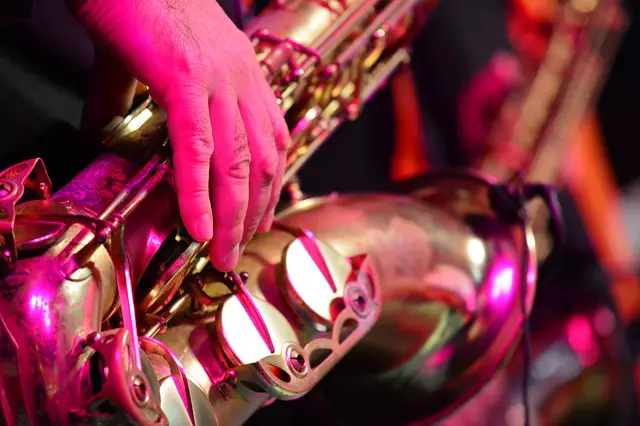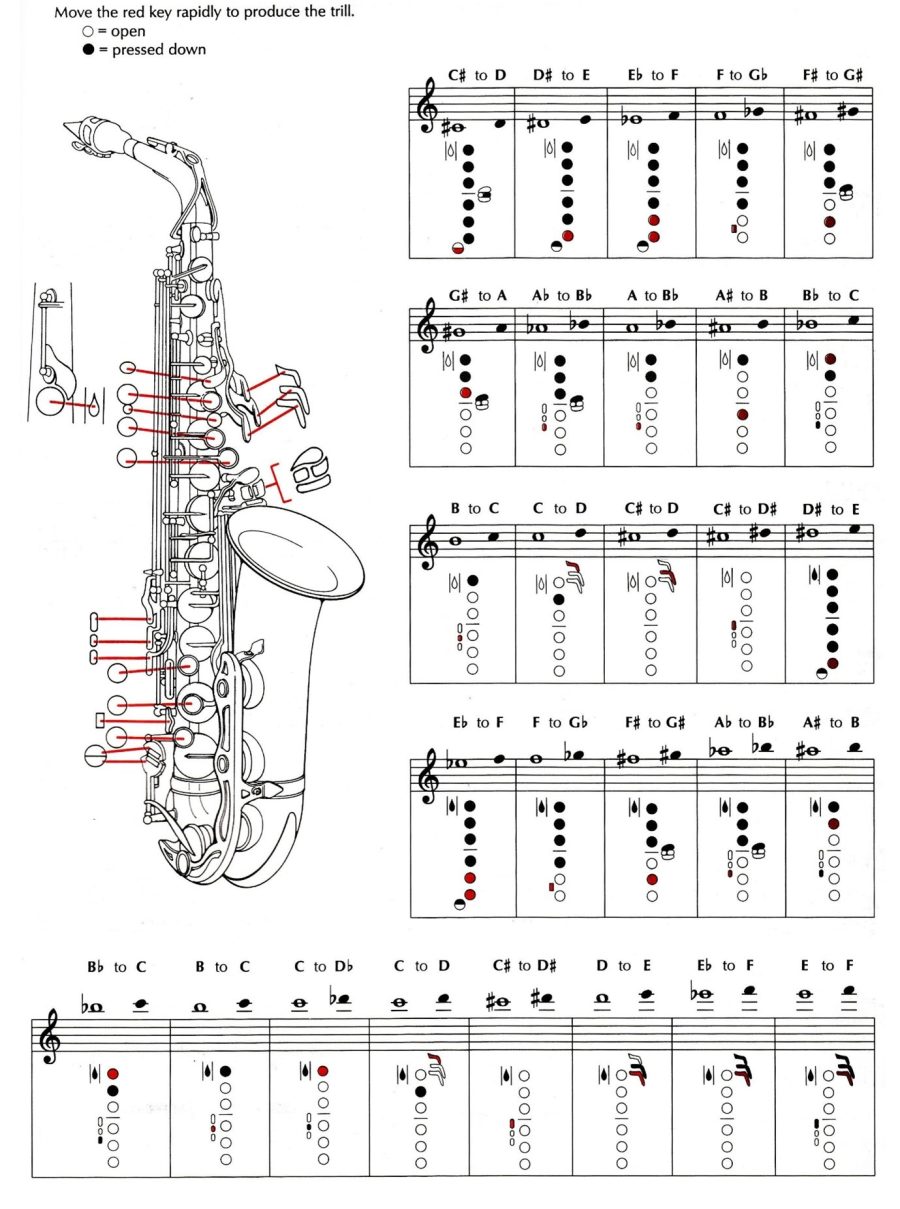
The Complete Saxophone Fingering Chart
Contents
The Saxophone Range
The saxophone fingering chart is shown below. Since the range is the same for all saxophones, whether you play an alto saxophone, tenor saxophone, or any other, the saxophone fingering chart shown below applies to all kinds of saxophones. The lowest note is B flat, which rises two and a half octaves to the highest note, F. Everything above the top F is known as the altissimo range, and it can be learned once you’ve mastered the normal range.
The clarinet and, in particular, the flute, are other instruments with similar fingering systems. The transition from those instruments to the saxophone will find the saxophone fingering system to be very simple to pick up.
The fingering is the same for the entire saxophone family, with the alto and tenor being the most popular:
- sopranino
- soprano
- alto
- C melody
- tenor
- baritone
- bass
- contrabass
Top Notes (left hand)
Octave Key is the very top key, labeled OK. A thumb rest is located directly below the saxophone and is pressed with your thumb as needed.
The next key, denoted by an X, is for alternate fingering, which will be covered in a later lesson.
The key is then marked:
- This is the index finger of your right hand.
The key is then marked:
- This is the ring finger of your middle finger.
The key is then marked:
- This is the third finger.
Below that is the cluster, which is made up of four notes that are all pressed with your pinky finger.
Keys on the top side
With the palm of your hand, just below your index finger, press the D side key.
With your index finger, press the Eb key.
The third finger is used to press the F key.
Notes at the bottom (right hand)
The key labeled 4 corresponds to your index finger.
The middle finger is represented by the key marked 5.
The number 6 corresponds to your third finger.
The two half-moon-shaped keys below that are pressed with your pinky finger.
Keys on the bottom of the page
The E, C, and Eb side keys are all pressed with your index finger.
The 3rd finger is used to press the side F# key.
Saxophone FAQ’s
Do all saxophones have the same fingering?
Since all saxophones have the same fingering, the fingerings are substitutable. When switching from an alto to a soprano sax, for example, the alto has an E tube while the soprano has a B tube, resulting in different sounds even when playing the same score.
Why are there different keys for saxophones?
The four main saxophones (soprano, alto, tenor, and baritone) are divided into two key groups: soprano and tenor are in B flat, while alto and baritone are in E flat. This is due to concert pitched instruments such as the piano or guitar.
Is it possible for a saxophone to play chords?
If it is a Soprano, Alto, Tenor, and Baritone Sax lineup, it can play chords and cover a wide range. Multiple notes can occur on the saxophone, but they are very limited and will not usually be used to accompany a soloist.


